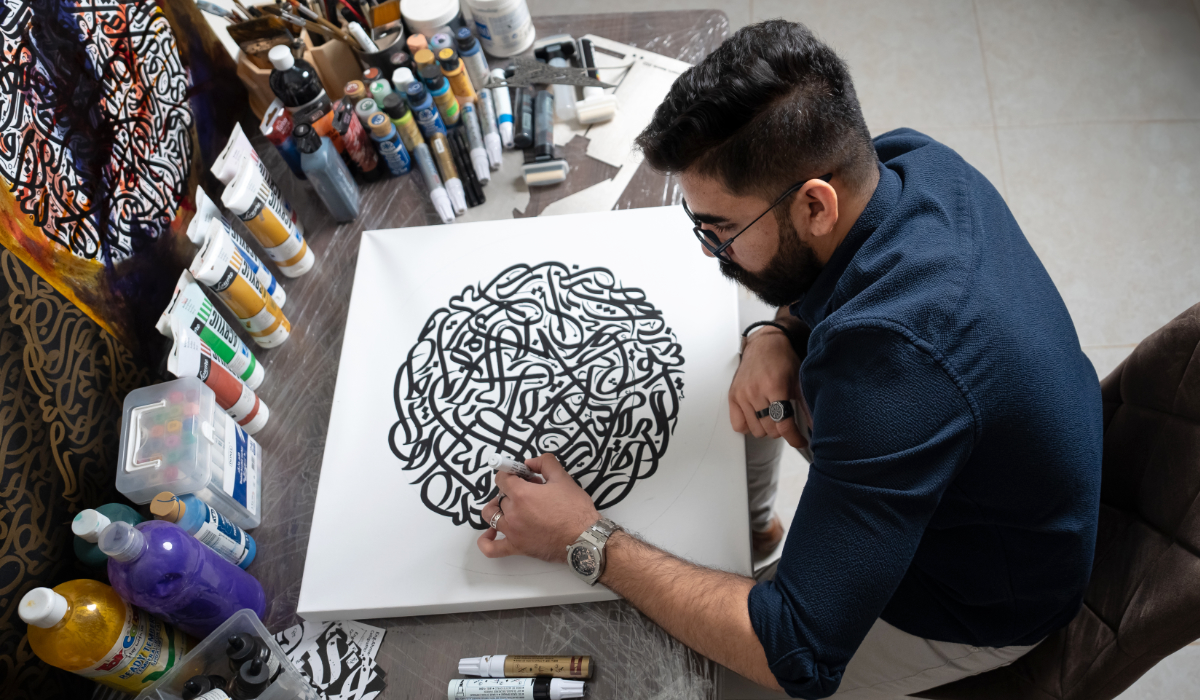WNAM REPORT: Saudi artist Ahmed Al-Sulaimani is redefining the boundaries of traditional art forms by blending Arabic calligraphy and graffiti-inspired techniques.
The Riyadh-based artist’s journey into the realm of calligraffiti began during an Arabic calligraphy course in school where he discovered his passion for the intricate art.
Inspired by the expressive potential of the written word, Al-Sulaimani began experimenting, blending this ancient art form with bold and dynamic graffiti.
“Calligraffiti is a fusion of Arabic calligraphy and graffiti art,” Al-Sulaimani told Arab News. “While graffiti typically uses the English language and letters, calligraffiti combines Arabic calligraphy with graffiti techniques. I form Arabic letters using graffiti-inspired styles and methods.”
This approach has not only captured the attention of art enthusiasts but has also opened doors to remarkable opportunities, including a mural collaboration with Jeddah Municipality that marked his first foray into large-scale public art.
“This project allowed me to showcase my skills in integrating Arabic calligraphy into large-scale murals,” he said. “It caught the attention of many and inspired me to continue exploring the use of Arabic calligraphy in public art.”
Following that project, the ministry selected Al-Sulaimani to design and produce large-scale murals in 10 cities across the Kingdom, including on bridges, towers, and public spaces.
The pinnacle of his achievements, however, came with the opportunity to design Arabic signage for the 2022 FIFA World Cup in Qatar. Tasked with creating towering structures featuring Qur’anic phrases, Al-Sulaimani’s work brought the beauty of the Arabic language to the global stage.
“The towers, some reaching 40 meters in height, featured Qur’anic phrases that emphasized the diversity of the human experience,” he added.
Beyond his mural work, Al-Sulaimani has also shared his expertise with international audiences. He has facilitated workshops teaching Arabic calligraphy to Harvard students visiting Saudi Arabia, introducing the art form to those unfamiliar with the Arabic language.
“I aim to bring this unique art form to the forefront and showcase the richness and versatility of the Arabic language,” he noted.
He is also working on launching his own Arabic font that will “combine elements from various calligraphic styles” and reflect “a distinct Saudi identity.”
“I aim to bring this unique art form to the forefront and showcase the richness and versatility of the Arabic language”.
The artist said: “This project is a reflection of my desire to create a font that is uniquely representative of the Saudi culture. The font will be out by the end of this year and will be used digitally as well.”
Al-Sulaimani noted that his works are more than just an artistic endeavor; they are a way to share the beauty and depth of Islamic culture with the world. His calligraffiti is infused with Qur’anic verses and Islamic themes that encourage viewers to explore the meaning behind the words.
Despite the challenges he has faced, including the reluctance of established artists to mentor beginners and misconceptions about the legitimacy of his approach, Al-Sulaimani remains undeterred. He has found creative ways to overcome these obstacles, including inventing his own tools and techniques.
With unwavering dedication and innovative spirit, the Saudi artist is shining a bright light on the rich cultural heritage of the Kingdom and leaving a meaningful mark on the world of contemporary art.


